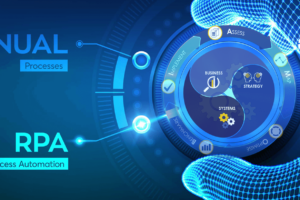Digital Customer Experience: The Key to Staying Ahead in Leasing and Asset Finance
The leasing and asset finance industry is undergoing a significant shift as lessors adapt their business models to stay ahead of market trends. To meet the demands of today’s customers, asset finance providers need to offer faster and more streamlined delivery for the Digital Lending journey while providing a seamless customer experience (CX). The industry faces challenges in responding to these changes due to outdated legacy systems that cannot keep up with the pace of digital innovation. Companies in this industry need to adopt strategies to create more frictionless, linear journeys across all customer touchpoints and engagement models. But before we dive into the core principles of a successful digital customer experience (DCX) let’s take a closer look at some concepts.
Customer Experience vs Digital Customer Experience
Customer experience (CX) refers to a customer’s overall perception of a business based on their interactions across all physical and digital channels. It includes everything from the quality of the products or services offered to how customer service is delivered and encompasses all touchpoints a customer has with the business.
Digital customer experience (DCX) refers to a customer’s overall experience when interacting with a company through digital channels such as a website, mobile app, or social media. It encompasses everything from the ease of navigation and functionality of a digital platform to the quality of customer service provided through digital channels, the design and usability of these channels, and the quality of the content and functionality.

Core Principles of a Digital Customer Experience
With so many options available to consumers in the digital age, companies must provide a seamless and user-friendly experience to remain competitive.
A bad customer experience can have a huge economic impact on a company. Research indicates that after more than one bad experience, around 76% of consumers say they would rather do business with a competitor and 80% say the experience a company provides is just as important as its products or services. Customers compare experiences between the apps and processes of different companies to ensure they get the best possible user experience. A recent study explains that 59% of customers believe that companies need to provide cutting-edge digital experiences to keep their business. Customers will compare factors such as usability, speed, reliability, design, personalisation, and security to determine which app or process best fits their needs.
A good customer service experience heavily impacts recommendations. Another report shows that 94% of consumers who give a company a very good CX rating are likely to recommend that company. That’s why gathering information from constituent users along these comparative lines should be part of the digital user experience strategy. By understanding what customers value and expect in their digital experiences, companies can make informed decisions about improving their apps and processes to meet those expectations better. Users’ feedback allows companies to proactively address any issues or concerns that arise and maintain a positive relationship with their customers. The information from users about their experiences with competitors provides valuable insights into industry trends and helps them stay ahead of the curve.
To build a successful digital customer experience, companies should focus on these three fundamental areas:
Companies must leverage automation to create streamlined business processes in the backend, use data to gauge customer sentiment and build omnichannel market strategies to deliver products and services to customers via their preferred platforms. Equipment finance companies that want to do this must rethink their core operations. Adopting an integrated end-to-end lease management platform eliminates the friction between existing processes, enabling the organisation to deliver a faster and superior customer experience.
The first step is removing manual, paper- or call-based processes from the equation. Nobody likes paperwork, and those who can quickly transform those clunky experiences into seamless digital customer journeys gain a competitive advantage.

But customer experience cannot be done once and forgotten about. The key is continuous improvement. But to maintain high levels of satisfaction, it is imperative to move fast, test new technologies and approaches, and improve on an ongoing basis.
Data
In our digitally driven world, organisations have access to a wealth of data providing more opportunities to analyse customer behaviours and preferences and develop improved experiences. The idea is to drive a culture of decision-making based on an analytical approach to customer behaviour patterns and not necessarily on preconceived notions of customer preference. Each customer’s data tells a story. By building frictionless business processes, leasing and asset finance companies enable data flow across functions. With the right data strategy, companies can use data to predict whether a customer will extend its lease term.
The Customer
Customer experience is how customers feel about every interaction with the company at all stages of the customer lifecycle. Companies must keep customers at the heart of product design and innovation, offering a comprehensive customer journey surrounding the core products or services to create a seamless, multi-channel, timely, and highly customised customer experience. According to the Zendesk Customer Experience Trends Report 2023:
- 72% of customers want immediate service
- 70% expect anyone they interact with to have full context
- 62% think experiences should flow naturally between both physical and digital spaces
- 62% agree that personalised recommendations are better than general ones

Automated processes become a primary driver for productivity, and agile ways of working are a prerequisite to meeting seemingly daily changes in customer behaviour. Built on this foundation of data and automation, innovative technology solutions can help companies phase into more sophisticated orchestrations of the customer experience. By focusing on these key elements, leasing and asset finance companies can build a robust digital customer experience that meets the needs of modern customers and sets them apart from competitors with:
• User-Friendly Experience: all digital platforms, such as their website, mobile app, and online portals, are easy to navigate and use. This means having a clean, intuitive interface, clear instructions, and easy access to support where customers can apply for financing, track their accounts, and make payments.
• Personalisation: Customers expect a personalised experience tailored to their needs and preferences. Companies can personalise the customer experience using data analytics by offering customised financing options, targeted marketing messages, and tailored support.
• Omnichannel Experience: Customers interact with companies across multiple channels, including websites, social media, email, phone, and in-person. To provide a seamless DCX, companies need to ensure that the customer experience is consistent across all channels.
• Efficient and Transparent Process: Companies need to streamline the leasing and asset finance process by using digital tools and automation to reduce paperwork, decrease wait times, and provide real-time updates, eliminating the need for paper-based forms and manual processing.
• Proactive Support: Companies should proactively support customers by anticipating their needs and addressing potential issues before they become problems. This can include offering proactive communication about account status and providing self-service options. With the use of artificial intelligence and natural language processing, chatbots and virtual assistants can provide instant and personalised responses to customers’ queries and requests. This can improve the efficiency and accuracy of customer service and reduce wait times.
• Security and Compliance: companies must ensure the security of their digital platforms and comply with relevant regulations to protect customer data and maintain trust. Mapping business processes is a critical step. It helps companies can identify areas where customer data is at risk and implement adequate controls to mitigate them. It also enables companies to audit and monitor their systems and processes to ensure that they comply with regulations. Companies can use the process map to track data flows, identify potential risks, and monitor the effectiveness of controls. This helps in identifying areas that need improvement and ensuring ongoing compliance with regulations.
The leasing and asset finance market is at a tipping point as lessors are rethinking their business models while staying ahead of the curve in the marketplace. Organisations are devoting resources to augment internal systems with disruptive technologies that will automate and improve internal processes, such as the execution and validation of transactions. Agility, data, and customer-centric product design are key to success in the industry. VIP Apps Consulting works with leading leasing and asset finance companies to optimise and automate business processes that create unparalleled customer experiences.






